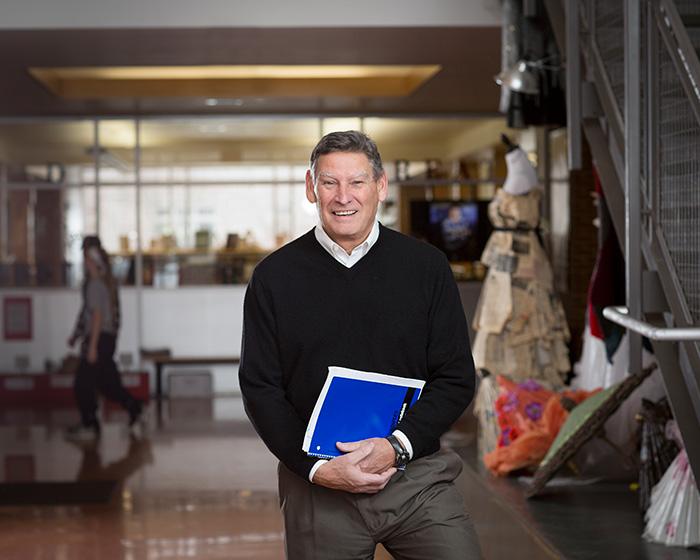Equity and relationships are at the heart of every leadership decision Ron Stahley makes. Looking back over a long career in education, Stahley can trace a clear line from support programs he benefited from as a child, to the strong relationships he built as a teacher and student council adviser, to his student-centered priorities as a principal, to his school-climate focus as a superintendent.
One of the most visible examples of Stahley’s commitment to equity is his role in Brattleboro, Vermont’s Community Equity Collaborative. After a hate incident shook a local high school back in 2008, Stahley joined town officials, community members, law enforcement and clergy to respond to the incident with public statements, town forums and a community-wide conference based on the theme of “envisioning a community free of prejudice and discrimination.” Over the last 10 years, under Stahley’s leadership, the Collaborative has gone on to establish comprehensive programming designed to “galvanize the community,” including middle school leadership trainings, yearly school climate surveys, student-led school leadership teams, collegiate high school courses that emphasize social competencies, and community diversity celebrations.
How did your experience as a teacher inform your work as a district leader?
I think it’s invaluable as an administrator that you have a teaching background. I think a lot of my decisions came from being a teacher, knowing I had very supportive principals, but I also had some principals who were not. And I felt like I wanted to support my colleagues. I held people accountable, but I believe developing relationships is really important.
As a principal and superintendent, I always thought about how my decisions as a leader would impact our teachers and students. So, I believe I’m student-centered, I think, because I enjoyed teaching so much.
Can you describe your collaborative approach in dealing with some of the challenges your district faced relating to bias or discrimination?
Our high school principal encouraged me to work with him to change the school’s mascot. Brattleboro Union High School is known as the Colonels and they had this image that really looked like a [Confederate] colonel. A young black girl had come to him with her student ID. It had her picture on it and the image of the Southern colonel. She stated, “I just don’t feel comfortable with this.” He replied, “Yeah, I don’t either.”
We worked to change that over a two-year process that ultimately went really well. We had a lot of information sessions with student and teacher input. We just kept bringing it back to the students, how they felt. We changed it, and it was the right thing to do.
We had follow-up discussions and forums on race, discrimination and equity issues with a broad range of community participants. That laid the foundation for the Community Equity Collaborative.
Members of your staff describe you as an “active bystander.” What does that mean?
It’s part of our climate survey: “I know what it means to be an active bystander.” “I know what to do to stop people from hurting others.” “I know how to help students who are targeted.” So that’s part of our training. We talk about the word bystander, what would a bystander be, and kids will define it as somebody kind of watching what’s happening. And we talk about what would be an active bystander and what are the strategies as a student that you can take that wouldn’t endanger yourself. We just focus on what students can do. And I always felt from student council work, it’s really the students that make up what the school is like, as opposed to the teachers and the principal. And that gives the students quite a bit of power.
What strategies do you use to keep the school system focused on the needs of all students?
I went to a conference a couple years ago, and I heard this person use this quote, “Every student. Every day.” And that really struck me. That’s kind of the theme that we think about. Every student. Every day. That it’s not about the school system. It’s not about me. It’s not about the superintendent. It’s about every kid.
What suggestions do you have for other school leaders about how to sustain diversity and equity initiatives over time?
It’s got to be part of your core values. Get people in your district who can help work with you. We do what we call Professional Learning Communities (PLCs). We have a Diversity/Equity Committee with representatives from all schools. We work to incorporate those discussions into our staff meetings. We have community forums to support this work.
So, in terms of other administrators, I think you just have to believe in it and then think about resources that you can use to support the way to do it. You just have to believe that this is important. And the concept of the school culture and climate being so important—not the standardized test results—as the end-all, be-all.
Make a safe school and kids will thrive.
Ron Stahley, the 2012 Vermont Superintendent of the Year, recently retired from the Brattleboro School District after working in education for 42 years.
Know an excellent administrator, librarian or counselor we should interview?
Tell us all about them.


1 COMMENTS